With steep competition for jobs (with at least three people for each opening, most likely more) and so many ways for your competitors to stand out in their job search, it’s even more important to find effective ways to stand out in the job market. Hokey tactics like printing your resume on colored paper, using strange fonts, or calling an employer too often are all frowned upon. But job seekers, feeling desperate, don’t know what else to do. Add to the mix the increase in the use of social media, and figuring out how to separate yourself from your competition can seem overwhelming.
One way to wow an employer during an interview, and in the application process, is to create a career one sheet. This is a one-page document that complements your resume in several ways. It gives you the opportunity to provide greater detail about projects and accomplishments relevant to the position you are applying for. Or it can highlight topics that you don’t have space for or aren’t appropriate to include in a resume. For example, if you are applying for a leadership position, your one sheet can explain your leadership philosophy or management style. If you are a graphic designer or architect, you can include the process you use to understand what a customer wants from your design product and your design philosophy as well. Here are some examples of what you can include in your one sheet:
- Work, leadership, design philosophy
- Career objective — We don’t typically recommend our resume clients include an objective on their resume. Resume space is precious. The employer knows you are interested in their job so we feel the objective isn’t necessary. On your one sheet you could expand upon why you are interested in their position and, even more so, what your long-term career goals are.
- Accomplishments or projects — On your career one sheet you can provide additional detail about your accomplishments, more so than you would on your resume, for example, because space might be limited. You can also include projects you worked on and tell the story of your impact in those projects that you wouldn’t include on your resume again due to limited space.
- Design examples — If you are in a creative field, your one sheet can be part of the portfolio you submit, including design examples from previous jobs.
What you include depends on your industry and the role you’re applying for. If it’s not a leadership position, for example, a leadership statement isn’t necessary. Just as would your resume, tailor your one sheet to the jobs you are applying for. Here’s an example of a one sheet from one of our clients to give you an idea of what it could look like:
Leadership Philosophy
1. Purpose
I feel I am an excellent candidate for a health and human service position in Continuing Care Retirement Communities.
2. Values and Principles
My values and principles are as follows:
Leadership
- I endeavor to be a leader. I choose to lead because I can help more people through a leadership role. I want to serve residents by helping them realize their full potential no matter what age or circumstances they find themselves in. Together, more residents can be served by working with others through positive teamwork and a great work environment.
- Delegation and responsibility are important aspects of working with team members. While I can delegate the work, I am still responsible for the results, so it is my responsibility to make sure that team members fully understand what the expectations are. It is my responsibility to follow up and monitor progress towards meeting expectations and support team members in meeting those expectations. Supporting team members involves helping to remove roadblocks and seeing that team members have the tools and the resources they need to be successful. It also involves coaching and mentoring team members to help ensure team members stay on track. It involves making sure I don’t ask someone to perform a task they are not equipped to perform and to make sure that I have the right team members who are able to perform the tasks at hand.
- I value fiscal responsibility. Without a bottom line there is no mission. Fiscal responsibility is a shared responsibility, which we all are responsible for.
Holistic Care
- I value wellness of mind, body, and spirit. As team members, it is important to have a healthy work/life balance where we work hard but also have time for family, exercise, play, and relaxation. I believe we are more effective when we are in balance.
- Residents have shared with me that they are looking for quality of life more than quantity of life; that they are looking for wellness of mind, body, and spirit; and that they are looking for the safety, security, and peace of mind that comes with knowing that their needs are being considered and provided for. As a customer service business that is responsive to residents’ needs it is important that we as team members are sensitive to residents’ needs and preferences.
- In many ways we are in a grieving business. As residents age they may be confronted with a variety of losses to work through. These losses can include the loss of a job that provides purpose and meaning in life, the loss of a spouse who they have journeyed through life with for many years, the loss of a home, the loss of a car and the independence driving provides, and the loss of various physical abilities. Being in a community helps residents work through their grief. Being in community with residents and team members who understand provides support. Being in a community where residents can eat, pray, play, and work together can be joyful!
- I value humor. We can be serious and conscientious about our work but still have a good time carrying out our duties and relating to one another. It is important to celebrate life and be thankful for each day. Humor is a great tool to help celebrate life.
Teamwork
- I value diversity. I don’t expect everyone to be like me. I don’t have all the answers and value the strengths, experience, and gifts of others. Strong teams are a blend of team members with varied strengths, abilities, and gifts. Each and every team member is important and when diverse teams work well together a wonderful synergy develops, allowing us to best serve our residents.
- I value those serving as much as those being served. It is important for a retirement community to be a great place for team members to work and residents to live. If the retirement community is not a great place for team members to work it will not be a great place for residents to live.
- I believe in setting an example. I will not ask anyone to do anything I am not also willing to do.
- I value progress more than I do perfection. There is no such thing as the status quo. We are either moving forward or falling behind. My goal is to always keep moving forward. Some things require an A effort and others do not. Knowing the difference will allow us to accomplish more.
- I value risk taking and initiative. Risk taking is necessary to explore new opportunities. I expect people to make mistakes. Mistakes can be great teachers. I expect staff to learn from their mistakes and not repeat them.
- I value working smarter. Hard work does not necessarily yield results. Smart work gets results, looks for efficiency, and strives for quality.
- I value creativity. Creativity is often borrowing business processes, products, and technology and making it your own. Technology can be a good tool for meeting needs, lowering transaction costs, and improving efficiency.
- I value openness, loyalty, and trust. Openness, loyalty, and trust help foster good teamwork and good teamwork yields good results.
- Conflict in the form of differing opinions and debate can be healthy provided it is above board, respectful, and honest. I value open dialog, listening to one another, and debating the merits of various alternatives. I believe it is important to strive for win/win solutions if possible. Once a decision is made, I expect support of that decision even if we don’t fully agree with it.
- I dislike games such as lobbying the residents, being passive aggressive (giving the cold shoulder), and gunny sacking (letting things build up instead of dealing with them and then exploding when the issues become overwhelming). Games are unhealthy, destroy relationships, and create dysfunction in teams.
- I like to build consensus if possible. Planning, preparing, communicating, listening, exploring alternatives, and patience are important and helpful in building consensus and developing support. There will be times when a consensus cannot be reached and there will be times when business reasons dictate that I will make a decision for business reasons even though it may be unpopular.
- It is important as a team and it is important for me as the person ultimately responsible that we keep each other well informed regarding resident issues, regulatory issues, operational issues, personnel problems, and progress on agreed-upon priorities. I don’t like surprises.
- The golden rule is a good rule to live by. If we treat others the way we want to be treated we will work better together. Team members who are feeling beat up and are licking their wounds are not as effective as those who are treated with respect, kindness, and appreciation. We hold people accountable for doing their jobs well and meeting agreed-upon priorities. We hold people accountable in a manner that is professional, respectful, and dignified.
- Besides team member relationships, the golden rule applies to residents as well. In our work serving our residents I expect team members to care for residents as they would like to be cared for when they reach old age and have their own aging challenges. I would like to see team members love and care for our residents as they would for members of their own families. Such a sense of caring is what makes our communities have the feeling of being like one big family. In many ways we are a surrogate family and partner with our residents, our residents’ biological families, and health care providers to meet residents’ needs as they age.
Final thoughts: Link to your career one sheet on your resume, in case someone gets ahold of that document and not the one sheet. Use a Dropbox link, for example, or some other service that can host your document securely but allow users to download it easily. Insert the link into your LinkedIn profile as well, in the summary section.



